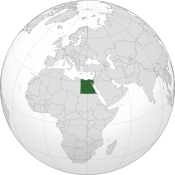Egyptian archaeologist finds artifacts which may lead to Cleopatra's tomb
Sunday, April 19, 2009
Zahi Hawass, Egypt's pre-eminent archaeologist, revealed the first ancient artifacts which may lead to the discovery of Cleopatra and Marc Antony's resting place.
The expedition has found amulets, 22 bronze coins cast with Cleopatra's image and her name, a royal statue, an alabaster mask resembling Marc Antony, and a statue bust of Cleopatra. "If you look at the face of Mark Antony, many believed he had this cleft on his chin and that's why I thought this could be Mark Antony," said Hawass.
"In my opinion, if this tomb is found, it will be one of the most important discoveries of the 21st century because of the love between Cleopatra and Mark Antony, and because of the sad story of their death. This is the perfect place for them to be hidden," said Hawass.
Recently, outside the temple colourful mummies of nobles were excavated at a neighbouring necropolis. These discoveries have lead the archaeologists to believe that a ruler or person of royalty is interred within the temple itself. It was the practice of the Greco-Roman era to assemble the tombs of persons of status and other high ranking officials near their rulers.
"The discovery of the cemetery this week really convinced me that there is someone important buried inside this temple. No one would be buried outside a temple without a reason. We saw that in the pharaonic days, they were always buried beside pyramids," explained Hawass.
"She needed a place to be protected in the afterlife. If she had used the other burial site, she would have disappeared forever," said Kathleen Martinez, a Dominican archaeologist. She feels that "it could be Taposiris Magna because it was the most sacred temple of its time."
Dr. Roger Vickers team used radar to locate three chambers within the rocky hill atop of which is the Temple of Taposiris Magna dedicated to the goddess Isis. The temple was constructed about 300 BC by Ptolemy II.
The Supreme Council of Antiquities (SCA) expedition led by Hawass has yet to excavate the burial chambers 40 feet (12 meters) underground where they hope to find a crown or Egyptian hieroglyph {{w|cartouche]]s revealing the names of royalty. The team will employ radar again on April 22.
The Supreme Council of Antiquities expedition consists of Zahi Hawass, Secretary General of the SCA, and Martinez who has extensively researched the life of Cleopatra.

Image: Hajor.
According to Plutarch who studied Roman history, Caesar allowed Marc Antony and Cleopatra to be buried in the same tomb.
Alexandria is located about 30 miles (48 km) from the Temple of Taposiris Magna. The archaeological site is on a hill along the Mediterranean Sea overlooking the summer home of Hosni Mubarak, president of Egypt. The archaeologists fear they may have to postpone work for security reasons over the summer months.
Related news
- "30 brightly coloured mummies discovered in Egyptian necropolis" — Wikinews, April 13, 2009
- "Egyptian treasures found in ancient tomb" — Wikinews, March 13, 2009
Sources
- Paul Schemm. "Coins, mummies and statues point to Cleopatra tomb" — Associated Press, April 19, 2009
- Will Rasmussen. "Archaeologists hunt for Cleopatra's tomb in Egypt" — Thomson Reuters, April 19, 2009
- "Press Release - News from the Temple of Taposiris Magna" — Zahi Hawass's blog, April, 2009


